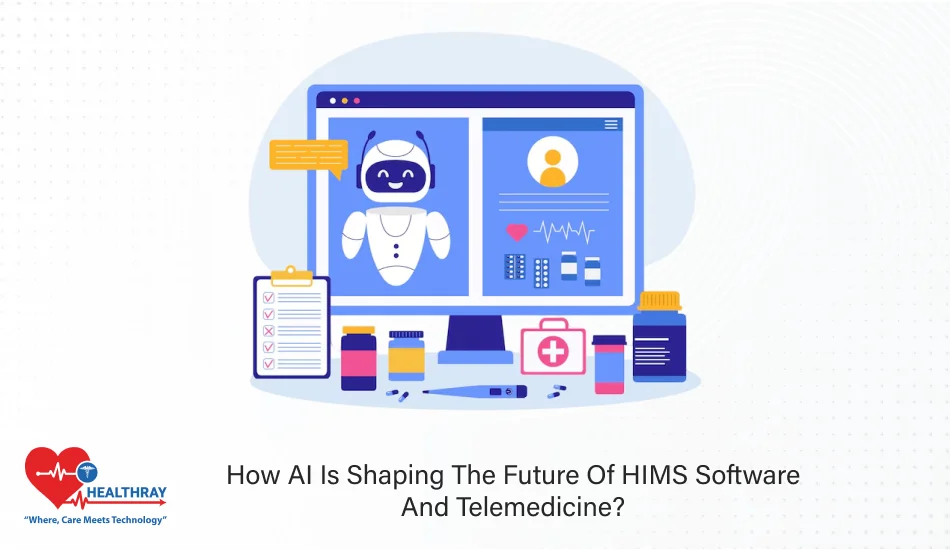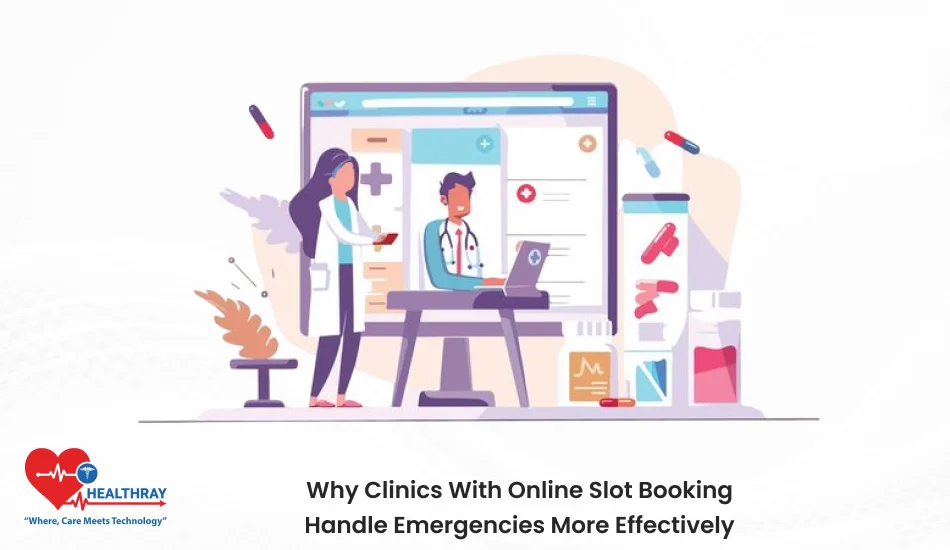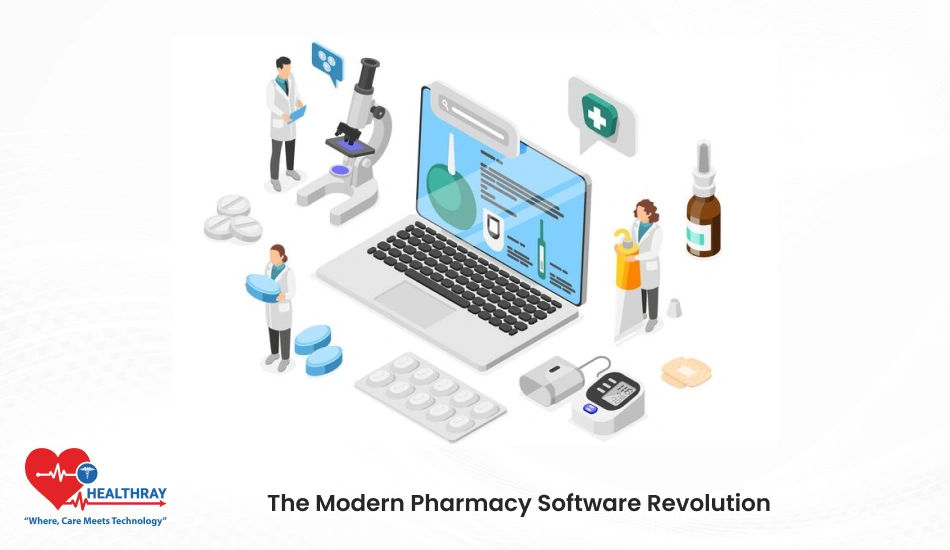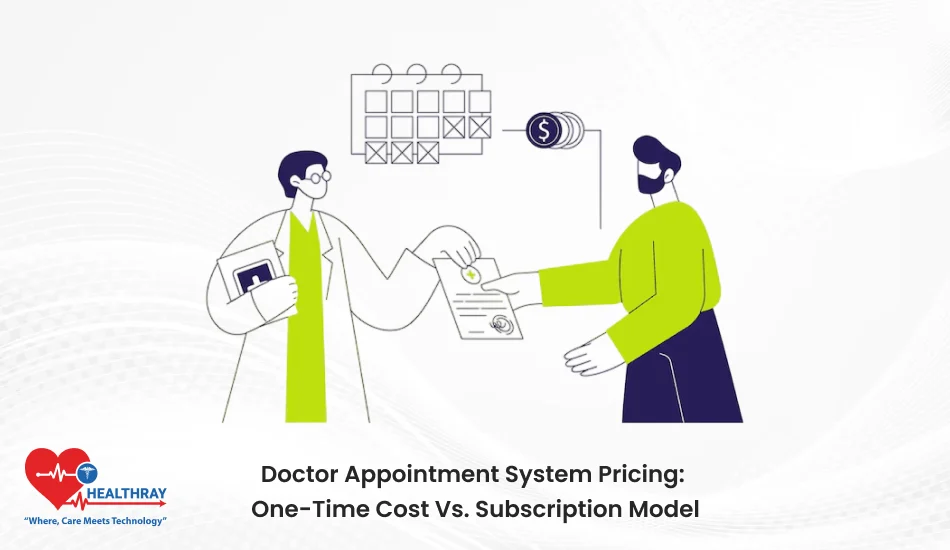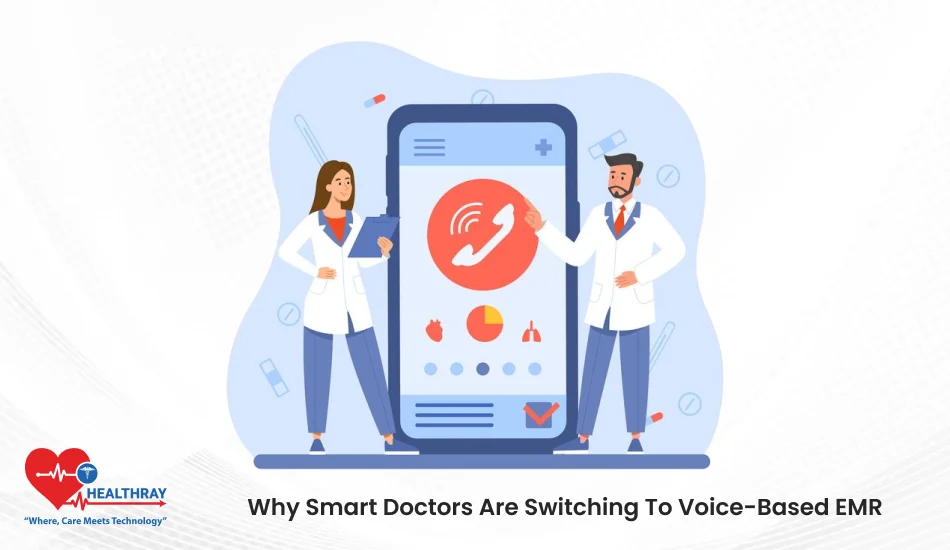AI is no longer a buzzword or something one just hears about; it’s changing industries, one after the other, and healthcare cannot be any exception. From simple chatbots to now, AI has been critical for telemedicine in improving patient care and optimizing operations. Companies like Hospital Information Management System & Hers are leading from the front by introducing tools like Healthray, using AI to match patients with the right providers and create personalized treatment plans.
But how does all of that play out with the doctors, startups, investors, and enthusiasts of technology? AI for doctors could mean sharper diagnoses and smoother workflows. For startups, it is an opportunity to be ahead in the competitive market. To investors, this means lucrative opportunities that are opening up within the expanding space of telemedicine, while to technology enthusiasts, it is innovation powering such an advancement.
How AI is Revolutionizing Telemedicine
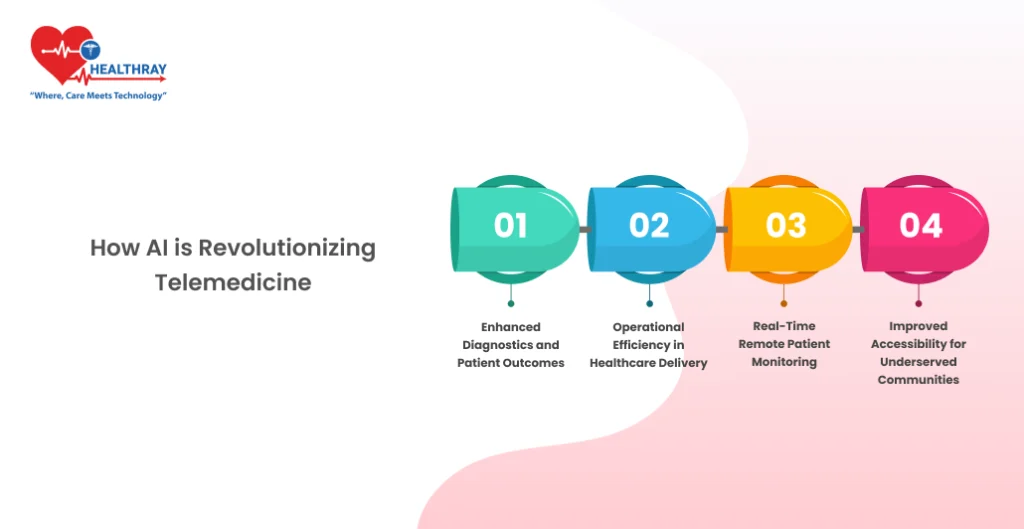
Artificial Intelligence has been one of the mainstays of innovation in telemedicine, revolutionizing the face of health care provided remotely. Major uses include the following:
Improved diagnosis and patient outcomes
As AI algorithms can review a lot of medical data, they can find patterns that might not be noticeable by a human professional. It enhances the precision and speed of diagnosis. For example, AI-based applications process the symptoms, case history, and test results of patients to provide disease-specific treatment recommendations. Such developments create avenues for more accurate care and improved patient outcomes.
Operational Efficiency in Healthcare Delivery
Telemedicine platforms apply AI to automate repetitive tasks. From appointment scheduling to triaging of patients, AI releases health professionals’ time to be more care-oriented than administrative tasks. That also includes AI-powered triage systems that provide real-time symptom triaging, assess the urgency of a case, and refer them to the right specialist. This not only cuts down the waiting time but optimizes resource utilization.
Real-Time Remote Patient Monitoring
Undoubtedly, the most exciting application of ai-enabled telehealth would be its remote monitoring feature. Wearables integrated with AI will monitor heart rate, blood pressure, and levels of glucose in the blood. Such devices send this information to health care providers in real time to allow the early detection of potential issues and timely interventions. This is a game-changing technology that extends a safety net for chronic disease management without always having to make physical visits.
Improved Accessibility for Underserved Communities
AI-driven telemedicine platforms break the barriers in access to healthcare. Providers can, through analyses of a host of data arriving from rural and underserved areas, more correctly pinpoint where gaps exist and how resources should therefore be distributed. It is an important component in dealing with healthcare disparities: ensuring more people receive quality care regardless of location.
AI in Hims Software: A Game Changer
With a vision to set benchmarks for innovation in telemedicine, Hims & Hers has embraced AI to redefine healthcare delivery. The key strengths include Healthray, an AI-powered tool for personalization of the healthcare experience for both the patient and the provider.
Personalization at Scale
Healthray makes use of AI to analyze symptoms, medical history, and treatment preferences of patients and subsequently matches them with the best-suited healthcare professionals. Such a personalized approach ensures that treatments provided to the patients are indeed what they need, thus improving the entire process satisfaction and treatment outcomes.
Simplified Provider Matching
One of the largest challenges with telemedicine is how to connect a patient with the right providers in the most efficient way possible. HIMS takes the guesswork out. Patients are not sifting through option after option, wondering what will best suit them; instead, AI instantly recommends a suitable provider, saving time on both ends.
Improving Care Plans Using Data Insights
Beyond matching, AI in HMIS software empowers providers to create effective care plans. AI tools analyze a great volume of health data and give insights to providers which would help them make more informed decisions. Such valuable insights result in personalized treatments, which help achieve better health outcomes for the patients.
Transforming the Patient Experience
Patients’ experience with Hims & Hers is seamless and technology-driven. AI reduces response times, removes administrative backlogs, and makes treatment more engaging, thereby increasing patient trust and setting a benchmark of what modern telemedicine can deliver.
AI Trends in Telemedicine

Telemedicine is among the fastest-evolving areas, while AI stays abreast of breakthrough innovations. It is these trends that shape the future not only of remote healthcare delivery but bring new opportunities for all stakeholders.
AI Chatbots for Patient Engagement
Therefore, AI chatbots have now become an integral part of telemedicine, answering every query that a patient can have in real time. They do everything from appointment setting to symptom checking and medication reminding, hence allowing continuous engagement on the part of the patient. By incorporating natural language processing, the chatbots understand and can respond to patient concerns in conversational language, thus further facilitating access and trust.
Natural Language Processing in Documentation
The adoption of NLP technology has given rise to a new wave in doctor interaction on telemedicine platforms. It automates the process of documentation, transcribing conversations between patients and providers to reduce administrative burdens. Consequently, this would allow providers to spend more time caring for patients while being more accurate and current with their records.
Predictive Analytics for Proactive Care
AI-powered predictive analytics tools analyze a patient’s data to predict future health problems. For example, such tools might quickly flag early signs of chronic conditions so that healthcare providers may institute early interventions before the problem becomes serious. This is quite helpful in applying timely and targeted interventions, especially to high-risk patients.
Wearable Devices and Real-Time Data Integration
With AI-driven innovation, wearable health technology now can offer real-time patient monitoring. Telemedicine platforms have begun to take advantage of such wearables in ensuring continuity of care. Wearables can track everything from irregular heartbeats to glucose levels, leveraging AI to do all the calculation and triggering alerts regarding pending health risks.
AI-Assisted Imaging and Diagnostics
AI has become a true game-changer in diagnostics, especially when it comes to interpreting medical images. In fact, diagnoses have gotten much quicker and more accurate with the introduction of different analysis tools on telemedicine platforms for X-rays, MRIs, and other imaging data. The idea is to make advanced diagnostics available to even the most remote areas where often specialists are not available.
Blockchain Meets AI for Data Security
Recent development involves integrating blockchain technology with AI for safe data storage of patients. Blockchain thus provides integrity for the data while AI would draw on the same data to continually improve healthcare delivery. Such a system would balance the need to maintain privacy concerns with the need to actually use data in an effort to advance the algorithms behind AI.
Why AI in Telemedicine is a Lucrative Investment
The juncture of AI with telemedicine presents a huge opportunity for investment. The global healthcare landscape is undergoing a rapid shift toward technology, wherein AI-driven solutions for telemedicine have proven not only transformational but also financially rewarding.
Rapid market growth
The strong demand for access to health care from a distance has led to exceptional growth in the telemedicine market. AI amplifies the functionality of telemedicine platforms, rendering them more viable both for care providers and their patients. Analysts predict double-digit annual growth in the telemedicine sector, to which AI will be a significant driver with respect to innovation and revenue.
Cost Efficiency for Providers
AI-powered telemedicine reduces costs since automation of repetitive tasks is carried out while streamlining operations; AI triage systems do predictive maintenance of healthcare infrastructure, which saves them time and resources. This efficiency will therefore provide higher profit margins; hence, AI-driven platforms would be very attractive investment proposals.
Increased patient adoption rates
AI enhances user experiences and makes care more personalized, effective, and accessible. It is likely that patients will adopt those telemedicine solutions that bring intuitive interfaces, precise diagnoses, and timely interventions. Growing adoption fuels recurring revenues for the firms offering the telemedicine services.
Competitive Advantage to Early Investors
Investors targeting telemedicine platforms with AI innovations today will benefit in the future when those technologies become mainstream. Indeed, companies like Hims & Hers, with their AI-driven innovations such as Healthray, have shown that leveraging early mover advantage through AI allows a company to position itself as a market leader through offering scalable solutions for growing healthcare demands.
Regulatory Support for Telemedicine
But there is an increasing awareness on the part of governments and regulatory bodies worldwide regarding the importance of telemedicine. Policies that encourage the adoption of HIMS in Healthcare create an environment that is ripe for investment. As regulatory frameworks continue to evolve, risks from investment in telemedicine diminish.
What this means for telemedicine startups
Unique opportunities will enable telemedicine startups to unlock the transformative powers of AI. The integration of AI tools means efficiency in operations, differentiated services, and a step ahead of the game in the increasingly competitive market. Here is how.
Unleashing Faster Growth with AI Tools
AI makes it possible for startups to scale without sacrificing quality. Features such as automated appointment scheduling, AI-driven triage systems, and predictive analytics all enable the management of fast-growing patient bases without efficiency being compromised. Scalability is everything to a startup operating with limited human resources since even recruitment for telemedicine recruitment takes time and effort, which are too scarce in the initial days.
Competitive Advantage Delivered
AI-adopted startups immediately started to enjoy certain competitive advantages: the services powered by AI, like real-time remote monitoring or personalized care recommendations, clearly attract more patients with the convenience and accuracy that this provides. This constitutes the needed differentiation in a crowded telemedicine market for long-term success.
Increasing Patient Confidence and Satisfaction
Patients want to feel that telemedicine platforms are tailored for them and user-friendly. AI enables your startup to deliver truly personalized care, anything from symptom checkers able to provide relevant advice to virtual assistants that guide patients through their healthcare journey. This improves patient retention and helps to instill trust in the reliability of the platform.
Navigating the Regulatory Hurdles with AI
While the compliance might be a challenge for these startups, much of that regulatory process can be made simpler by AI. Tools tracking and managing patient data securely keep them compliant with privacy laws, while AI helps in creating detailed documentation that aligns with the set regulatory standards, thus minimizing risks for their business.
Operational Cost Optimization
Most startups work on shoestring budgets, and AI definitely helps by providing efficient, cost-effective means to optimize their operations. By automating repetitive tasks, reducing error rates, and enhancing workflow efficiencies, a startup can save valuable resources for use in strategic growth areas rather than administrative overhead.
Challenges of AI in Telemedicine
While AI revolutionizes telemedicine, its adoption is not without challenges. The challenges, when not met, may slow progress down and affect the reliability of the solutions that AI-driven healthcare offers.
Data Privacy and Security Concerns
While AI in telemedicine may at its core depend on a backbone of patient data, security remains a large concern. Further, serious impacts could result from cyberattacks and data breaches related to the management of sensitive health information, reducing trust in the use of the telemedicine platform. Attention should be paid by both startup and established providers to prioritizing encryption, securing data storage, and following regulations concerning privacy in patient data.
Bias in AI Algorithms
AI systems are only as good as the data they are trained on. If the training data is not diverse, then AI tools might output biased results, leading to unequal care. For instance, an algorithm trained on patients from one demographic may diagnose or provide treatment suggestions for patients from other demographic groups poorly. Again, it requires careful selection of the data with continuous auditing of the algorithm.
Integration with Existing Systems
These health care providers usually work on legacy systems that might not integrate well with this AI-powered telemedicine platform. Integration of technologies could be quite cumbersome and costly in many ways. Ensuring compatibility and seamless interoperability between old and new systems will be important to guarantee maximum value of AI in telemedicine.
Regulatory and Ethical Challenges
AI in telemedicine works in the gray area of regulation since regulators are still catching up to the pace of technology. The uncertainties can be daunting, especially for startups. Ethical questions regarding transparency in AI decisions and not becoming overdependent on algorithms are also being addressed.
High Initial Costs
Implementation involves very considerable investments at the front end. From the purchase of the AI tools themselves to training staff and maintaining infrastructure, the costs can add up quickly. The financial barriers can be especially hard to overcome, particularly if there is no outside funding or partnerships.
AI in Healthcare: the Future
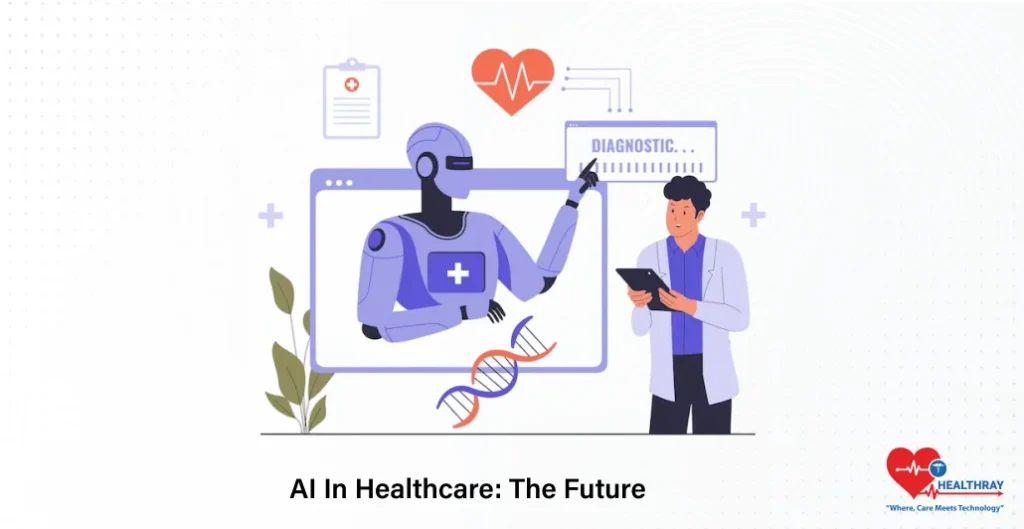
AI integration in telemedicine and healthcare would open the door to future medical services that are far more accessible, efficient, and personalized. Following are the key developments that will shape this transformation:
Frictionless AI-Powered Ecosystems
AI will enable connected health communities whereby data continuously flows in from the telemedicine platforms, wearable devices, and healthcare providers. It thereby allows real-time monitoring and delivers proactive care instead of just reactive treatments and hospitalizations.
Advanced Predictive and Preventive Care
With even more refinement, AI’s predictive capabilities will afford healthcare providers the foreknowledge of medical conditions even before the symptoms manifest. In this transformation from reactive to preventive care, better outcomes-especially in the case of chronic diseases-are to be expected, while healthcare costs are being reduced.
Widespread Adoption of Virtual Health Assistants
AI-driven virtual assistants will go on to perform higher levels of tasks involving patient counseling, treatment management, and mental health support. The role of virtual assistants would be personal health coaching and thus make healthcare more approachable and much less intimidating for the patient.
Greater Personalization of Treatment Plans
With improved machine learning, AI will evaluate data on genetics, environment, and lifestyle to develop highly personalized treatment plans. These analyses will result in even more effective care being offered, which is tailored to the needs of individual patients and thus furthers positive health outcomes.
Democratization of Healthcare
AI-powered telemedicine will bridge the gaps in access to health care caused by geographical and economic reasons. AI-powered telemedicine will make sure that health care is available universally as a right and not a privilege by making high-quality care available to underserved areas on mobile devices connected to the internet.
AI: A Collaborative Tool Rather than replacing practitioners
AI will be a collaborative tool that enhances their capabilities. This will involve AI providing insights and recommendations to providers, although the decision-making power will remain with the healthcare professionals. This partnership balances AI precision against human empathy in care.
Conclusion
AI is the future of telemedicine and health, presenting solutions faster, smarter, and more accessible than the world has ever seen. Be it through platforms like Hospital Management System & Hers that use tools like Healthray to make care personalized for patients or through trends within AI in diagnostics, patient engagement, and operational efficiency-the possibilities are transformational. AI simplifies workflows for healthcare professionals and improves outcomes for patients. With AI, startups can scale fast and differentiate themselves in the competitive market. For investors, this is an opportunity for a very lucrative deal in this rapidly growing sector; for tech enthusiasts, AI is an innovative edge coming into healthcare.
